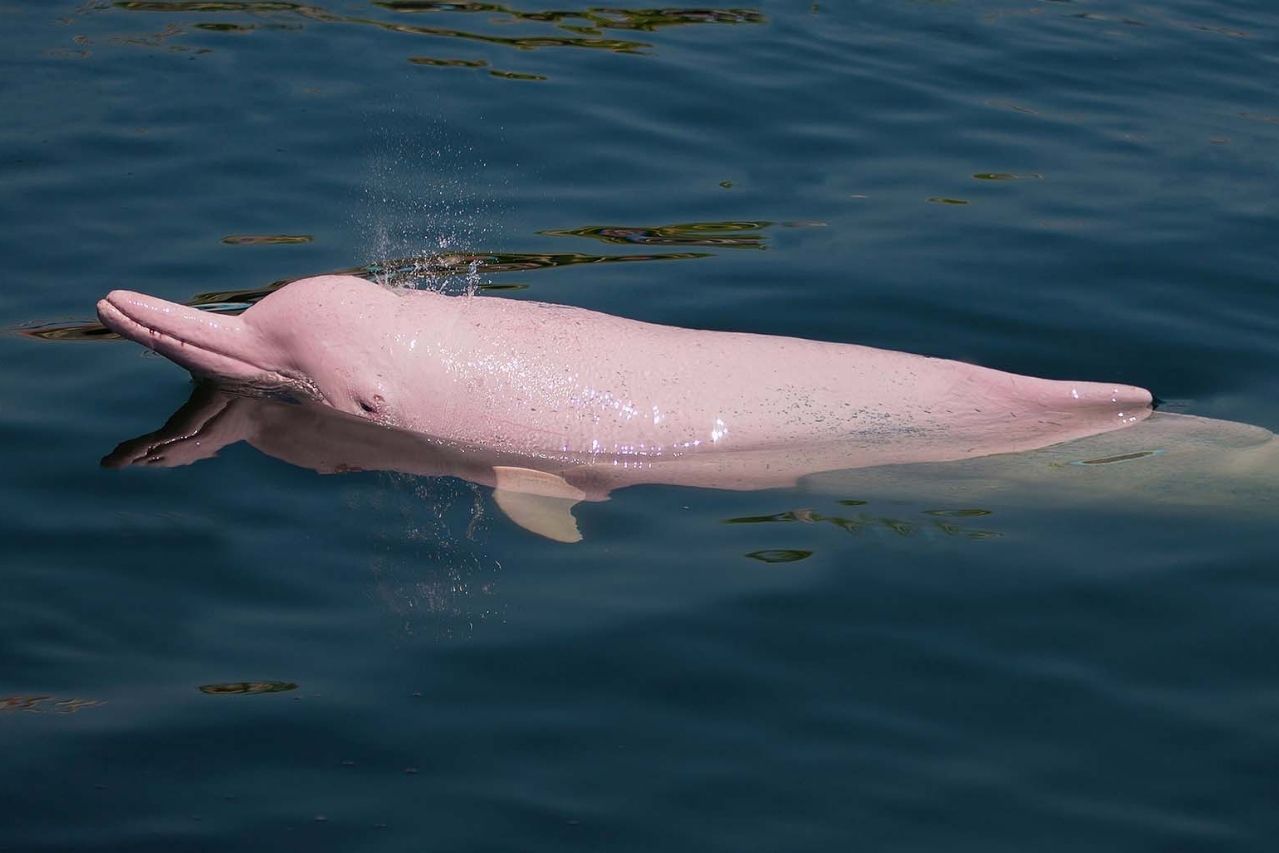A legendary creature of the Amazon
12/21/2020
Strategic Area:
Species -
Content Type: Blog
Country:
Ecuador - Peru -
Did you say a pink dolphin?
This year, Nature and Culture introduced Strange Miracles of the Rainforest and Beyond, a monthly feature looking at remarkable gifts from nature.
To inspire awe of the planet’s extraordinary biodiversity, we featured antibiotics from an unlikely source, a tree that treats malaria, a climate-saving superpower, and more!
As our monthly miracles come to a close, we dedicate December to a legendary creature of the Amazon.
Most of us are familiar with the fun and playful bottlenose dolphin named Flipper. Fewer people know about Flipper’s rosy-colored cousin, the pink river dolphin.
The pink river dolphin (Inia geoffrensis), also known as the Amazon river dolphin or boto, is the largest freshwater dolphin in the world. It is found in northern and central South America, specifically in the Amazon and Orinoco basins and the Madeira River.
Upholding the reputation of its salt water dwelling kin, the boto is social, friendly, and extremely intelligent. Unlike the species’ marine cousin, the creature has a bulbous forehead and a long, skinny beak. Most strikingly, males can be pink.
The coloring is believed to be scar tissue from rough games or fighting over conquests. The brighter the pink, the more attractive the males are to females.
The boto has some other unusual features. Because its spine isn’t fused together, like most other dolphins, it is able to turn its head from side to side. This allows the dolphin to easily swim through flooded forests.
Botos also have powerful flippers and tail flukes and a modified hump in place of a dorsal fin. They are the largest of the four river dolphin species, reaching up to eight feet long and 450 pounds!
Scientists see botos as top predators of the Amazon aquatic ecosystem — considering them the jaguars of the rivers. Indigenous beliefs hold that the river dolphin is a magical creature. Males and females are both said to have the ability to morph at will into either a handsome man, or beautiful woman, to seduce villagers in the dark of night.
Despite the boto’s ecological significance (and legendary reputation), the species is endangered due to hunting, human pressures and degradation of habitat. Specially, the building of hydroelectric dams decreases the available food supply and oxygen levels downstream. Additionally, agricultural expansion and mining pollute the dolphin’s habitat with pesticides and heavy metals, affecting both botos and their prey.
With your help, Nature and Culture is working to fight these threats and defend the species’ habitat. Together we can ensure that the boto remains a friendly face of the Amazon!
Right now, you can protect the variety of life on Earth – with twice the impact! Join Nature and Culture’s end-of-year campaign where your gift will be matched dollar-for-dollar through December 31.
The variety of life on the planet is our greatest treasure. Yet one million of the estimated eight million plant and animal species on Earth are at risk of extinction. Nature and Culture hopes that by sharing these 12 Strange Miracles you’ll be filled with wonder and gratitude for each species that enriches the planet. Stay tuned for next month’s feature!




